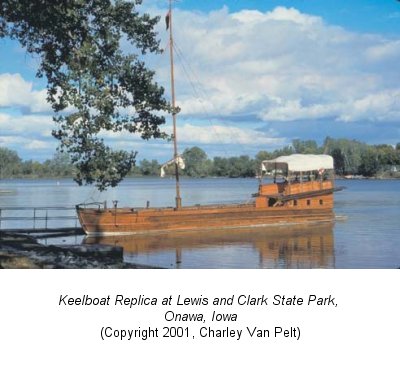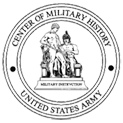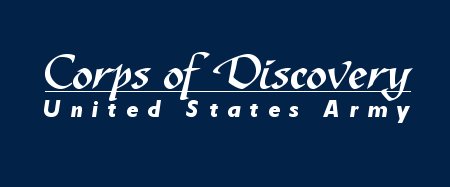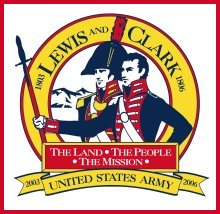The U.S. Army and the Lewis & Clark
Expedition
Part 4: Along the Ohio River
Pittsburgh, as a riverboat-building center in 1803, provided a logical
starting point for the expedition chartered to discover an all-water
route to the west coast. While in Philadelphia in May, Lewis had placed
an order for a keelboat for the mission. Arriving in Pittsburgh, Lewis
found the builder had only just begun construction, which would take
another six weeks. Lewis worried about his ability to get down the Ohio
River, with its diminishing flows, and up the Mississippi River before
winter set in.
Other frustrating news followed. The shipment of supplies had not yet
arrived from Philadelphia. The driver had decided that the weapons were
too heavy for his team and had left them at Harpers Ferry, so Lewis
had to hire another teamster to bring the arms to Pittsburgh. Good news
came from Clark, who had accepted Lewis’ invitation to join the
expedition. Clark told Lewis he would be ready to go when the keelboat
reached Louisville, Kentucky. In the meantime, he would recruit only
quality men: the word was out, and Clark already had many young frontiersmen
eager to join the expedition. Lewis was delighted with this news, knowing
Clark was an excellent judge of men.
Lewis finally left Pittsburgh on 31 August. With him were seven soldiers
from the Army barracks at Carlisle, Pennsylvania, three prospective
recruits, the pilot of the boat Lewis had hired in Pittsburgh, and one
or two additional hands. It took them six weeks to travel down the shallow
Ohio River to Louisville. Along the way Lewis had stopped for a week
in Cincinnati to rest his men and take on provisions. Arriving in Louisville
on 14 October, he hired a local pilot to guide the boat safely through
a daunting set of rapids known as the Falls of the Ohio, then on a short
way to Clarksville, Indiana Territory. Once there, Lewis set off to
meet his cocaptain. Over the next two weeks, Lewis and Clark selected
the first enlisted members of the expedition. They included: Sgts. Charles
Floyd and Nathaniel Pryor and Pvts. William Bratton, John Colter, Joseph
and Reuben Field, George Gibson, George Shannon, and John Shields. (Colter
and Shannon may have joined Lewis before he had reached Cincinnati.)
These men became known as the Nine Young Men from Kentucky. Clark also
decided to bring along his servant, York, a black man of exceptional
size and strength.

The keelboat and two smaller, flat-bottom boats (called by their French
name, pirogue) departed Clarksville on 26 October and arrived two weeks
later at Fort Massac in southern Illinois Territory, about thirty-five
miles upstream from the junction of the Ohio and Mississippi Rivers.
Here, Lewis hired the respected Shawnee/French hunter, guide, and interpreter
George Drouillard, and accepted from the post two privates: John Newman
and Joseph Whitehouse. The seven soldiers from Carlisle Barracks who
had been temporarily assigned to bring the keelboat down the Ohio River
remained behind at Fort Massac. The party left Fort Massac on 13 November
and reached the confluence of the Ohio and Mississippi Rivers the next
evening. The men camped there for a week, while Lewis and Clark measured
both the Ohio and Mississippi Rivers and Lewis taught Clark how to make
celestial observations. The expedition then set out for St. Louis.
As they turned upstream into the powerful Mississippi River, Lewis
and Clark immediately realized they needed more men. All three boats
were badly undermanned, and the expedition seldom progressed more than
a mile an hour moving upstream. On 28 November the men reached Fort
Kaskaskia, some fifty miles south of St. Louis. The next day Lewis remained
behind to confer on personnel matters and to requisition supplies, while
Clark took the boats to Cahokia, a few miles below St. Louis. Lewis
left Fort Kaskaskia on 5 December and arrived at Cahokia the next day.
Following two days of talks with Spanish authorities, the party left
Cahokia and reached St. Louis early on the morning of 11 December.





